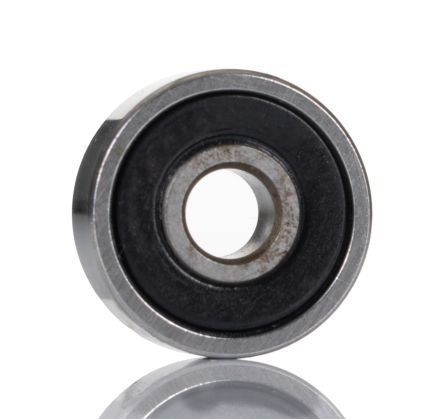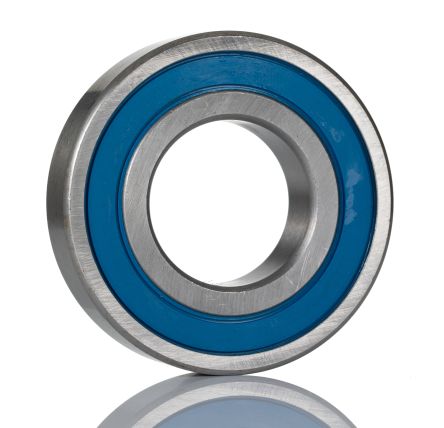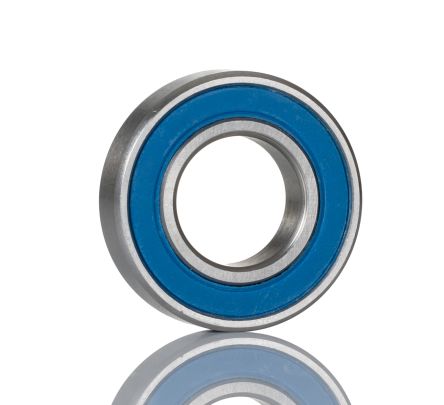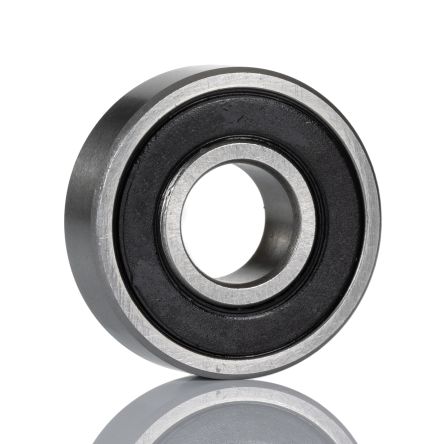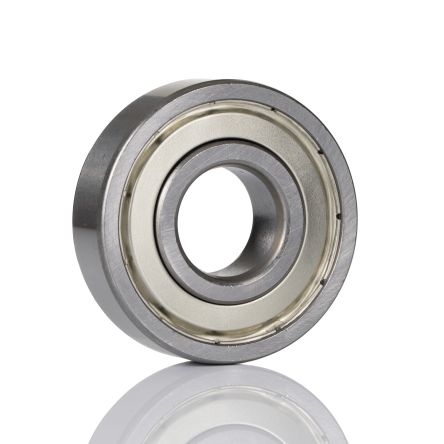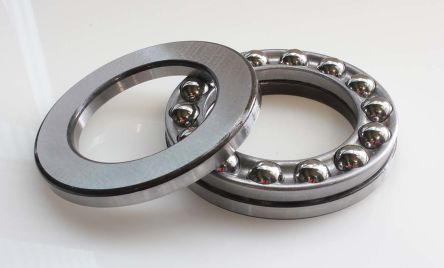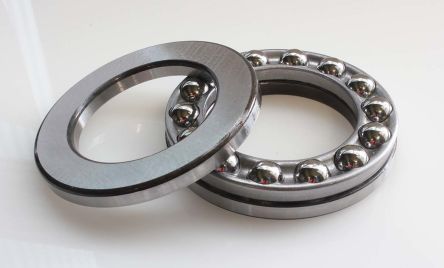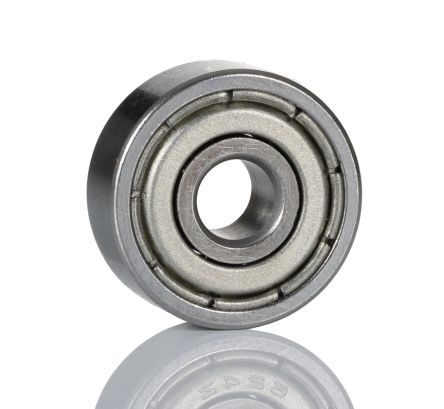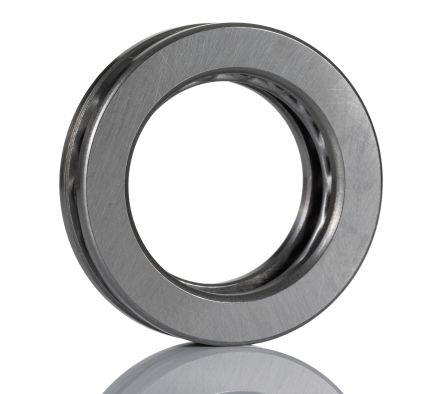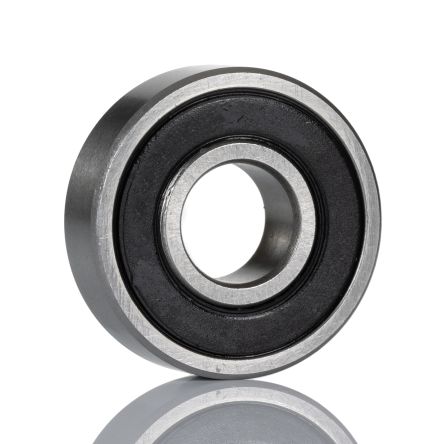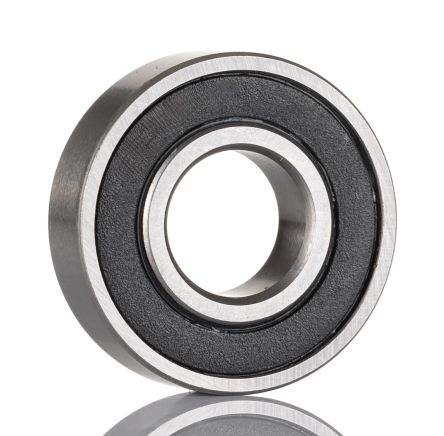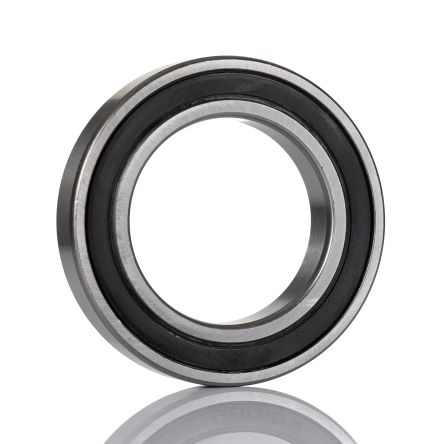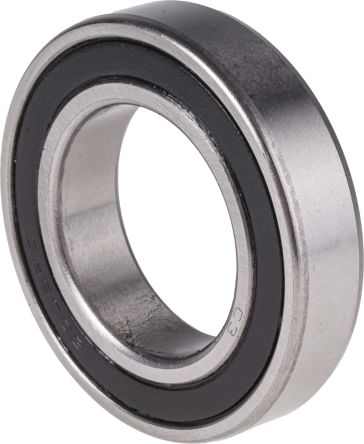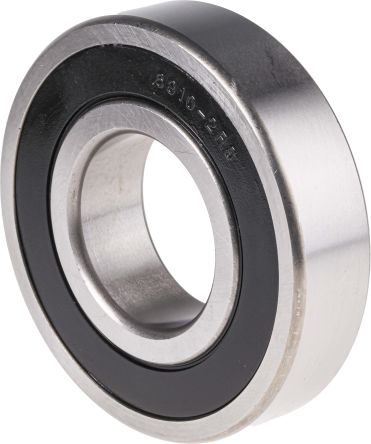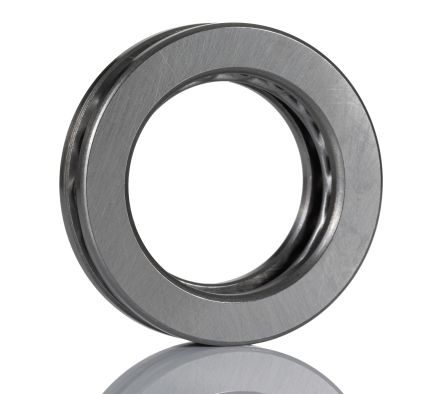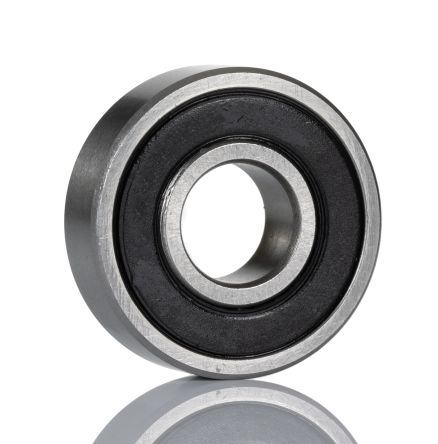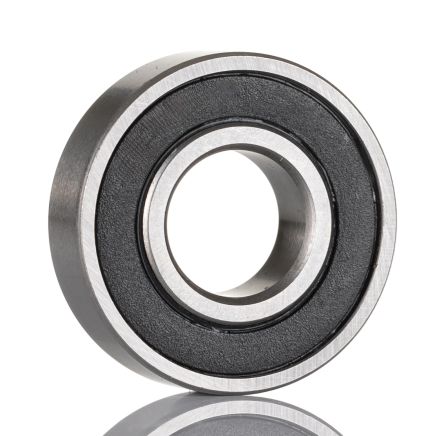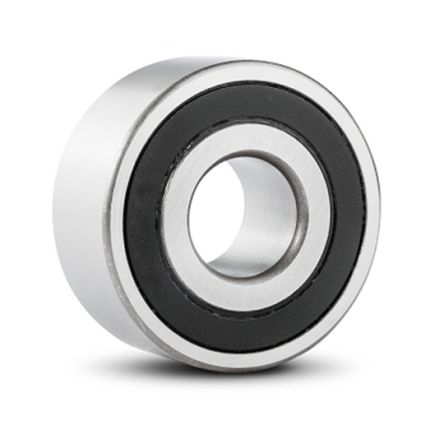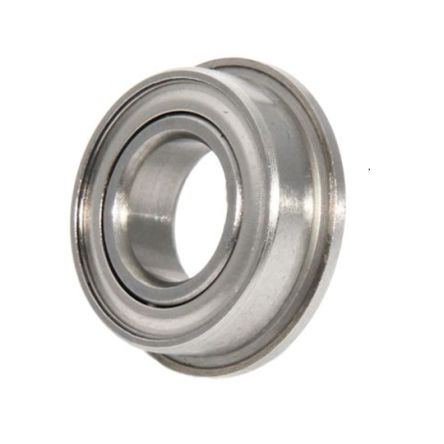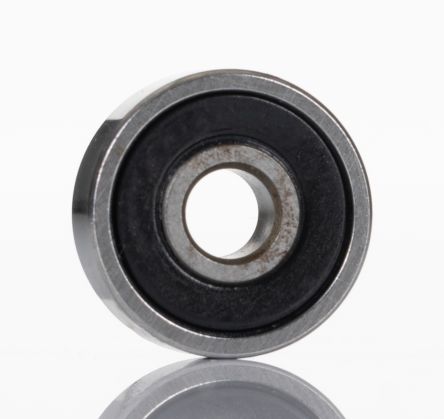- Automation & Control Gear
- Cables & Wires
- Enclosures & Server Racks
- Fuses & Circuit Breakers
- HVAC, Fans & Thermal Management
- Lighting
- Relays & Signal Conditioning
- Switches
- Batteries & Chargers
- Connectors
- Displays & Optoelectronics
- ESD Control, Cleanroom & PCB Prototyping
- Passive Components
- Power Supplies & Transformers
- Raspberry Pi, Arduino, ROCK, STEM Education & Development Tools
- Semiconductors
Ball Bearings
Ball bearings, also known as bearings or journal bearings, are important mechanical components used in a wide range of applications. These precision-engineered components consist of a set of small, spherical balls housed within a ring or raceway. They evenly distribute loads and allow for efficient, low-friction movement, supporting both radial and axial loads in linear and rotational motion. This design minimises friction and wear, enhancing the longevity and performance of mechanical systems.
Ball bearings are available in a variety of sizes and ratings, forming an integral part of various machines and mechanisms from small household appliances to large industrial equipment.
Benefits of Ball Bearings
Ball bearings offer a multitude of benefits that enhance the performance, efficiency, and longevity of mechanical systems. Here are some key advantages:
- Reduced Friction: Ball bearings minimise friction between moving parts by replacing sliding friction with rolling friction, resulting in smoother operation and reduced wear.
- Increased Efficiency: By reducing friction, ball bearings improve the efficiency of machines and equipment, requiring less energy to operate and minimising power consumption.
- Longer Lifespan: The reduced friction and wear associated with ball bearings contribute to a longer lifespan for mechanical components, reducing the need for frequent replacements and maintenance.
- Smoother Operation: Ball bearings enable smoother and quieter operation of machinery, reducing noise and vibration during use.
- High Precision: Ball bearings offer high precision and accuracy in movement, making them suitable for applications where precise positioning or control is required.
Types of Ball Bearings
There are various ball bearing types, each designed to accommodate specific load directions, speeds, and operating conditions.
Deep Groove Ball Bearings
- Single Row Deep Groove Ball Bearings: The most common type, featuring a simple design with a single row of balls running in a deep groove. They are versatile and suitable for applications with moderate radial and axial loads, such as in electric motors and household appliances.
- Double Row Deep Groove Ball Bearings: These have two rows of balls, providing increased load capacity compared to single row bearings. They are commonly used in applications with higher radial loads, such as in gearboxes and industrial machinery.
- Shielded and Sealed Deep Groove Ball Bearings: These deep groove ball bearings have built-in shields or seals to protect the bearing from contaminants and retain lubricant. Shielded bearings have metal shields that offer basic protection, while sealed bearings have rubber or plastic seals that provide a tighter seal against dust and moisture.
Angular Contact Ball Bearings
- Single Row Angular Contact Ball Bearings: Designed to handle combined radial and axial loads, primarily in one direction. They are commonly used in applications with high axial loads, such as machine tool spindles and wheel bearings.
- Double Row Angular Contact Ball Bearings: These have two rows of balls that can accommodate axial loads in both directions. They are often used in applications with high axial loads and require greater rigidity, such as in gearboxes and printing machinery.
- Paired Angular Contact Ball Bearings: Two single row angular contact bearings matched and mounted together to handle axial loads in both directions. This arrangement provides increased stiffness and accuracy compared to a single double row bearing.
Thrust Ball Bearings
- Single Direction Thrust Ball Bearings: Designed to handle axial loads in one direction only, making them suitable for applications where the axial load is primarily in one direction.
- Double Direction Thrust Ball Bearings: Can handle axial loads in both directions, ideal for applications where the axial load can reverse direction, such as in automotive clutches and marine propeller shafts.
Self Aligning Ball Bearings
Self-aligning ball bearings have a spherical outer ring raceway that allows the bearing to accommodate misalignment between the shaft and housing. This self-aligning capability is particularly useful in applications where shaft deflection or misalignment may occur, such as in agricultural machinery and conveyor systems.
Miniature Ball Bearings
Miniature ball bearings are small-sized bearings designed for applications with limited space or lightweight requirements. For precision instruments, small motors, and electronic devices, these ball bearings are preferred.
Hybrid Ball Bearings
Built for high-performance applications, hybrid ball bearings utilise ceramic balls in combination with steel rings. These ball bearings offer advantages such as higher speed capabilities, reduced friction, and increased corrosion resistance.
Ball Bearing Materials
Ball bearings are available in various materials to suit different applications and operating environments.
Stainless Steel
Stainless steel ball bearings offer excellent corrosion resistance, making them suitable for harsh environments or applications where hygiene is critical. They are commonly used in food processing equipment, medical devices, and marine applications.
Ceramics
Ceramic ball bearings, also known as ceramic bearings, offer high hardness, low friction, and excellent resistance to heat and wear. These properties make them useful in high-speed applications, high-temperature environments, or where lubrication is limited.
Plastics
For applications where low friction, noise reduction, or electrical insulation is required, plastic ball bearings are a popular choice. This is because of their lightweight, corrosion-resistant, and often self-lubricating qualities.
Applications of Ball Bearings
Ball bearings are indispensable components in various applications and industries, even as digitalisation and automation modernise industrial processes.
Automotive Industry
- Engines: Ball bearings are used in various engine components, such as crankshafts, camshafts, and connecting rods, to reduce friction and enable smooth engine operation.
- Transmissions: Gearboxes and transmissions rely on ball bearings to support rotating shafts and gears, ensuring efficient power transfer and smooth gear shifting.
- Wheel Hubs: Wheel hub bearings support the weight of the vehicle and allow the wheels to rotate smoothly with minimal friction.
- Steering Systems: Steering systems in automotives require the help of ball bearings for smooth and precise steering control.
- Alternators and Starters: Ball bearings support the rotating shafts in alternators and starters, ensuring reliable operation of these essential components.
Manufacturing and Machinery
- Machine Tools: Various machine tools, such as lathes, milling machines, and grinders, use ball bearings to support rotating spindles and ensure precise machining operations.
- Pumps: The rotating shafts in pumps often require the support of ball bearings for efficient fluid transfer. The components also minimise wear and tear in the pumps.
- Compressors: Ball bearings are used in compressors to support the rotating components, ensuring efficient and reliable operation.
- Conveyor Systems: Conveyor systems comprise rollers and other moving parts, which rely on ball bearings for support and smooth and efficient material handling.
- Industrial Robots: In industrial robots, where smooth and precise movement of arms and joints are essential, ball bearings play a pivotal role in ensuring that these essential components function well.
Aerospace and Aviation
- Aircraft Engines: Ball bearings are used in aircraft engines to support rotating shafts and turbines, ensuring reliable and efficient engine operation.
- Aircraft Landing Gear: Landing gear systems rely on ball bearings for the smooth retraction and extension of the landing gear.
- Satellite Systems: Satellite systems in space use ball bearings to ensure the precise positioning and control of various components, so that they can operate reliably.
How to Select a Ball Bearing
The right ball bearings are crucial for ensuring optimal performance and longevity in your application. Consider the following factors when selecting your ball bearings:
- Load Capacity: Choose a ball bearing with a load capacity that meets or exceeds the expected loads in your application. This will prevent premature bearing failure and ensure reliable operation.
- Speed: Consider the rotational speed of the application. High-speed applications may require specialised bearings designed for faster operation.
- Operating Environment: Consider the environmental conditions, such as temperature, humidity, and exposure to contaminants. Choose bearings with appropriate seals or shields for harsh environments.
- Lubrication: Select a bearing with appropriate lubrication for the application. Some bearings are pre-lubricated, while others require regular lubrication.
- Cost: Balance cost with performance and longevity. While higher-quality bearings may have a higher initial cost, they can offer longer life and reduced maintenance needs.
Buy Ball Bearings from RS Singapore
RS Singapore is a trusted supplier and distributor of ball bearings, sourced from reputable brands such as SKF, SNR, and FAG. Our online platform offers an extensive selection of ball bearings across various specifications and price points, making it easy for you to find the right components for your needs.
Beyond ball bearings, we also offer a range of mechanical tools and parts, such as jubilee clamps and heavy-duty castor wheels, making us a one-stop shop for all your hardware needs. Shop now and explore our flexible delivery options, including express and next-day deliveries, so you can easily acquire the products you need at your convenience. Please visit our delivery information page to learn more about our delivery options.
Popular Searches
Related links
- Roller Bearings
- Linear Bearings
- Linear Bearing Units
- PRECISION BEARINGS
- SKF NKX 20 20mm I.D Combined Needle Roller & Thrust Ball Bearing...
- SKF NKX 30 Z 30mm I.D Needle Combined Needle Roller & Thrust Ball...
- SKF 6406 Single Row Deep Groove Ball Bearing- Open Type 30mm I.D, 90mm O.D
- SKF 618/4 Single Row Deep Groove Ball Bearing- Open Type 4mm I.D, 9mm O.D
